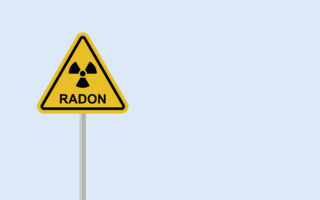Asbestos, lead-based paint, and radon. When do these environmental issues need to be evaluated as part of an Affordable Housing acquisition and/or rehabilitation project?
Asbestos was widely used in building materials, and other products, up through the early 1980s. While not widely used in building materials today, asbestos-containing materials are not completely banned in building materials that are used in the United States. Assessment of buildings for asbestos-containing materials is required by the U.S. Environmental Protection Agency (EPA) and State agencies prior to any renovation or demolition project regardless of construction date. As such many lenders and/or investors will require some level of asbestos assessment as part of the environmental due diligence process. Management of a property with asbestos-containing materials will also have continuing obligations to maintain these materials in good condition.
Lead-based paint was used extensively but was banned for residential use in 1978; therefore, any residential property built prior to January 1, 1978 may contain lead-based paint. Acquisition and/or renovation of an affordable housing development constructed prior to 1978 should include an evaluation of lead-based paint. Lenders have varying requirements for the assessment of lead-based paint and that may determine the level of evaluation, testing and/or assessment that will be required. Management of a property with lead-based paint will also have continuing obligations to maintain this paint in good condition and to notify residents of its presence.

Lead-Based Paint, Historic Flour Mill Before Rehabilitation
Radon is a naturally occurring colorless, odorless gas that can migrate into buildings from the subsurface or in some cases from building materials. Radon is the second leading cause of lung cancer. While some parts of the country have a higher potential for radon gas intrusion, it can be found in buildings everywhere. Testing for radon should be considered, and in most cases is required by lenders and financing partners, when acquiring an existing affordable housing property or prior to occupancy of a new development. In addition, given the potential for radon gas intrusion, use of radon resistant construction (including the installation of radon mitigation controls) should be included in new construction projects as a proactive measure.

Braun Intertec can help you understand the regulatory and financing-driven requirements to make sure the appropriate level of evaluation is conducted as part of your due diligence or rehabilitation process. If you are attending the upcoming virtual Affordable Housing Summit on May 12-13, 2021, stop by Braun Intertec’s virtual booth. We would appreciate the opportunity to discuss these issues or any of your questions regarding the environmental due diligence process.
